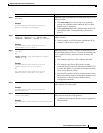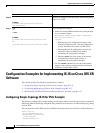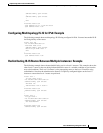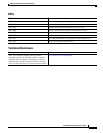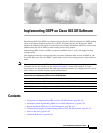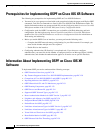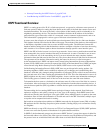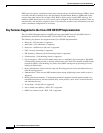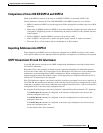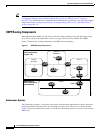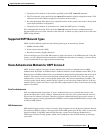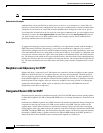
Implementing OSPF on Cisco IOS XR Software
Information About Implementing OSPF on Cisco IOS XR Software
RC-129
Cisco IOS XR Routing Configuration Guide
• Nonstop Forwarding for OSPF Version 2, page RC-140
• Load Balancing in OSPF Version 2 and OSPFv3, page RC-141
OSPF Functional Overview
OSPF is a routing protocol for IP. It is a link-state protocol, as opposed to a distance-vector protocol. A
link-state protocol makes its routing decisions based on the states of the links that connect source and
destination machines. The state of the link is a description of that interface and its relationship to its
neighboring networking devices. The interface information includes the IP address of the interface,
network mask, type of network to which it is connected, routers connected to that network, and so on.
This information is propagated in various types of link-state advertisements (LSAs).
A router stores the collection of received link-state advertisement (LSA) data in a link-state database.
This database includes LSA data for the links of the router. The contents of the database, when subjected
to the Dijkstra algorithm, extract data to create an OSPF routing table. The difference between the
database and the routing table is that the database contains a complete collection of raw data; the routing
table contains a list of shortest paths to known destinations through specific router interface ports.
OSPF is the IGP of choice because it scales to large networks. It uses areas to partition the network into
more manageable sizes and to introduce hierarchy in the network. A router is attached to one or more
areas in a network. All of the networking devices in an area maintain the same complete database
information about the link states in their area only. They do not know about all link states in the network.
The agreement of the database information among the routers in the area is called convergence.
At the intradomain level, OSPF can import routes learned using Intermediate System-to-Intermediate
System (IS-IS). OSPF routes can also be exported into IS-IS. At the interdomain level, OSPF can import
routes learned using Border Gateway Protocol (BGP). OSPF routes can be exported into BGP.
Unlike Routing Information Protocol (RIP), OSPF does not provide periodic routing updates. On
becoming neighbors, OSPF routers establish an adjacency by exchanging and synchronizing their
databases. After that, only changed routing information is propagated. Every router in an area advertises
the costs and states of its links, sending this information in an LSA. This state information is sent to all
OSPF neighbors one hop away. All the OSPF neighbors, in turn, send the state information unchanged.
This flooding process continues until all devices in the area have the same link-state database.
To determine the best route to a destination, the software sums all of the costs of the links in a route to
a destination. After each router has received routing information from the other networking devices, it
runs the shortest path first (SPF) algorithm to calculate the best path to each destination network in the
database.
The networking devices running OSPF detect topological changes in the network, flood link-state
updates to neighbors, and quickly converge on a new view of the topology. Each OSPF router in the
network soon has the same topological view again. OSPF allows multiple equal-cost paths to the same
destination. Since all link-state information is flooded and used in the SPF calculation, multiple equal
cost paths can be computed and used for routing.
On broadcast and nonbroadcast multiaccess (NBMA) networks, the designated router (DR) or backup
DR performs the LSA flooding. On point-to-point networks, flooding simply exits an interface directly
to a neighbor.
OSPF runs directly on top of IP; it does not use TCP or User Datagram Protocol (UDP). OSPF performs
its own error correction by means of checksums in its packet header and LSAs.
In OSPFv3, the fundamental concepts are the same as OSPF Version 2, except that support is added for
the increased address size of IPv6. New LSA types are created to carry IPv6 addresses and prefixes, and
the protocol runs on an individual link basis rather than on an individual IP-subnet basis.



